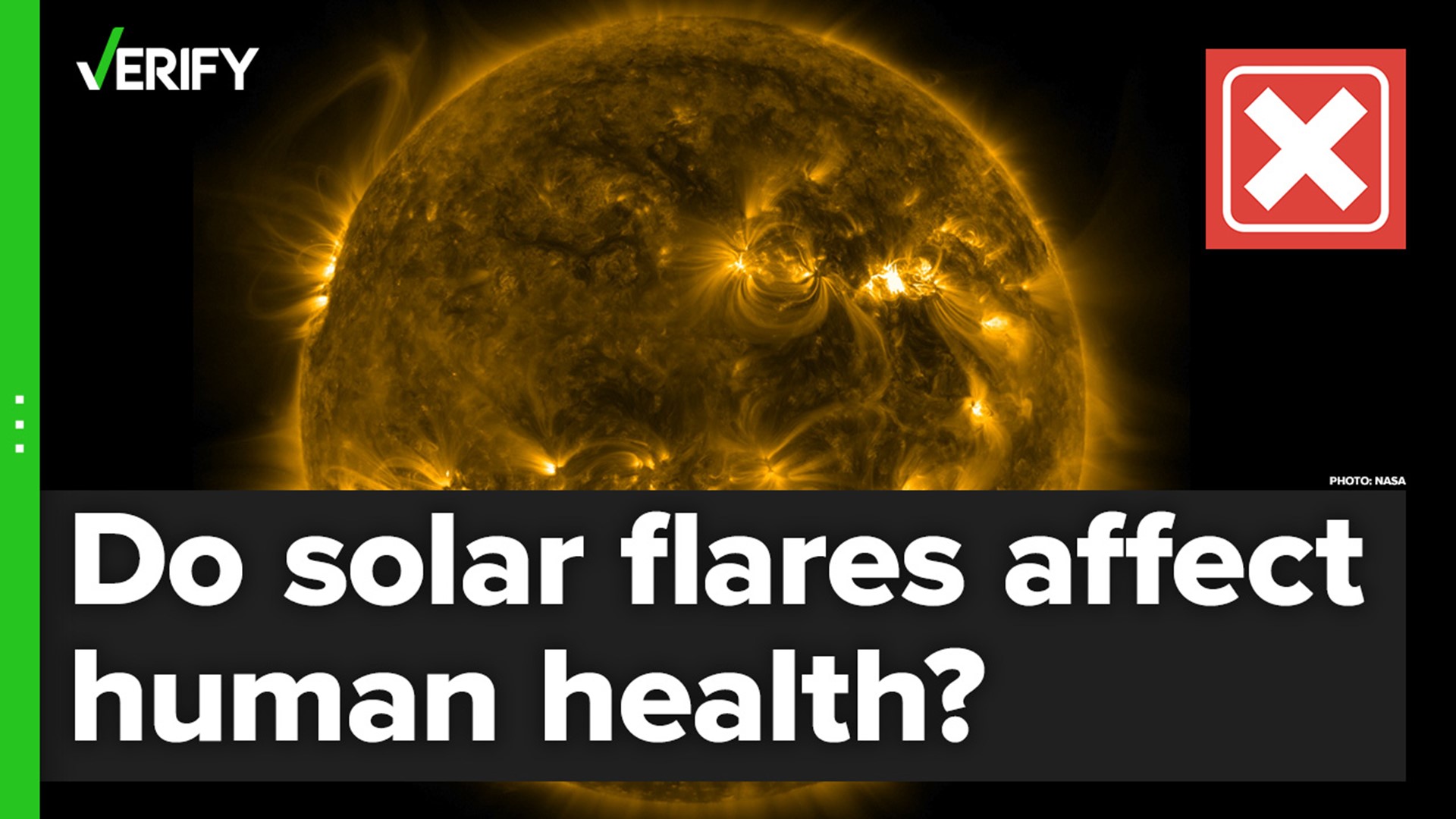Since late March, the sun has been unleashing solar flares powerful enough to cause radio blackouts on Earth, including one that occurred on Easter Sunday and shut down radios in parts of Asia and Australia.
Solar flares are described by NOAA as large eruptions of electromagnetic radiation from the sun that can last any time between several minutes and several hours.
People have gone to search engines to learn about solar flares this past month as the sun’s explosions continue making headlines, some of which claim these flares create a “radiation risk” for Earth. Among the most common searches are questions about the effects of solar flares, and particularly their effects on humans.
THE QUESTION
Do solar flares affect human health?
THE SOURCES
Jackie Faherty, senior scientist and senior education manager jointly in the Department of Astrophysics and the Department of Education at the American Museum of Natural History
THE ANSWER
No, solar flares do not affect human health so long as the person is not in space.
WHAT WE FOUND
Flares and solar eruptions, two kinds of bursts of particles from the sun, can impact radio communications, electric power grids, navigation signals and can threaten astronauts and spacecraft with radiation, NASA says. But Earth’s atmosphere and magnetic field protects people on the planet’s surface from any dangers solar flares could create.
Solar flares are one aspect of what astronomers call “space weather,” or the variations in the space environment between the Earth and the sun, according to NOAA.
“A flare means that the sun kind of burps highly charged particles in a direction,” explained Jackie Faherty, a scientist and educator in the Department of Astrophysics at the American Museum of Natural History.
These burps or bursts of energy often coincide with another feature of space weather, called coronal mass ejections, or CMEs, NOAA says. CMEs are large eruptions of plasma and magnetic field from the outermost layer of the sun’s atmosphere. They can occur either alone or alongside solar flares.
The combination of these two solar events can create a number of issues for infrastructure, including the recent radio shutdowns, but do not have an impact on people living on Earth.
NASA’s Goddard Space Flight Center explains that the highly-charged particles and X-ray radiation from solar flares can disrupt radio communications and impact the accuracy of GPS locating. These disruptions are caused by the particles disturbing the uppermost layer of Earth’s atmosphere, called the ionosphere, which, alongside Earth’s magnetic field, stops the X-rays and particles from reaching Earth’s surface.
If it wasn’t for the ionosphere and magnetic field, these emissions from the sun could cause dangerous radiation exposure to people and other living organisms.
While people are similarly protected from the magnetized plasma particles released in shockwaves by CMEs, they can cause damage to satellites and power stations, and even create power outages across entire regions. The impact of these magnetized particles create what scientists call “geomagnetic storms,” which are responsible for auroras such as the famous northern lights.
“The magnetic field you can think of kind of like a blanket that's protecting us,” Faherty said, adding that the atmosphere helps, too. “And it is preventing those charged particles that are coming from the sun from causing much damage to us here on the planet.”
Faherty said that things above the protective blankets of the magnetic field and atmosphere, like satellites, are more at risk of damage caused by solar flares and CMEs.
Astronauts on the International Space Station are typically safe, the Goddard Space Flight Center says, because of the station’s low orbit. However, astronauts would be at risk of radiation exposure on space walks, on the moon or on Mars if they left the space station during one of these space weather events.
A person traveling on a commercial airplane, even near or over one of Earth’s poles where its magnetic field is weaker, will experience slightly higher levels of radiation than usual during one of these solar events, but not enough to cause any harm to those exposed, the Health Physics Society says. Commercial airplanes typically travel five to seven miles above Earth’s surface, whereas the lowest portions of the ionosphere, which absorbs the x-rays emitted by solar flares, begin at about 40 miles above the Earth’s surface.
Solar flares go off all the time, Faherty said, and have been for every living person’s entire life.
“It doesn't mean any of them have been dangerous for your lives,” Faherty said. “That's something I would dispel right away. It's harmful for technology, for sure. But no one's scared in astrophysics about a solar flare damaging humans right now.”
More from VERIFY: No, a pink moon doesn’t actually look pink

